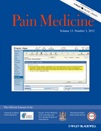
ARTHROPLASTY
ISB with ropivacaine plus perineural or IV buprenorphine, clonidine, & dexamethasone
Pain Med. 2016 May;17(5):940-6080 patients undergoing total shoulder arthroplasty (TSA) were randomized into one of the four groups for postoperative analgesia. Patients were allocated with either low-dose ropivacaine (0.1%), medium-dose ropivacaine (0.2%), or high-dose ropivacaine (0.375%) interscalene nerve block (ISB) plus perineural clonidine, dexamethasone, buprenorphine, or a control group with ISB with 0.375% ropivacaine and intravenous clonidine, dexamethasone, buprenorphine. Findings indicated that 0.375% or 0.2% ropivicaine plus perineural clonidine, dexamethasone, and buprenorphine demonstrated benefits regarding pain scores, as well as an opioid-sparing effect in the case of the high-dose group, compared to the control group. Low dose ISB of 0.1% ropivacaine with perineural additives is recommended to minimize motor blockade.
Unlock the full ACE Report
You have access to {0} free articles per month.Click below to unlock and view this {1}
Unlock NowCritical appraisals of the latest, high-impact randomized controlled trials and systematic reviews in orthopaedics
Access to OrthoEvidence podcast content, including collaborations with the Journal of Bone and Joint Surgery, interviews with internationally recognized surgeons, and roundtable discussions on orthopaedic news and topics
Subscription to The Pulse, a twice-weekly evidence-based newsletter designed to help you make better clinical decisions
Exclusive access to original content articles, including in-house systematic reviews, and articles on health research methods and hot orthopaedic topics
Or upgrade today and gain access to all OrthoEvidence content for just $1.99 per week.
Already have an account? Log in


Subscribe to "The Pulse"
Evidence-Based Orthopaedics direct to your inbox.
{0} of {1} free articles
Become an OrthoEvidence Premium Member. Expand your perspective with high-quality evidence.
Upgrade Now












































































